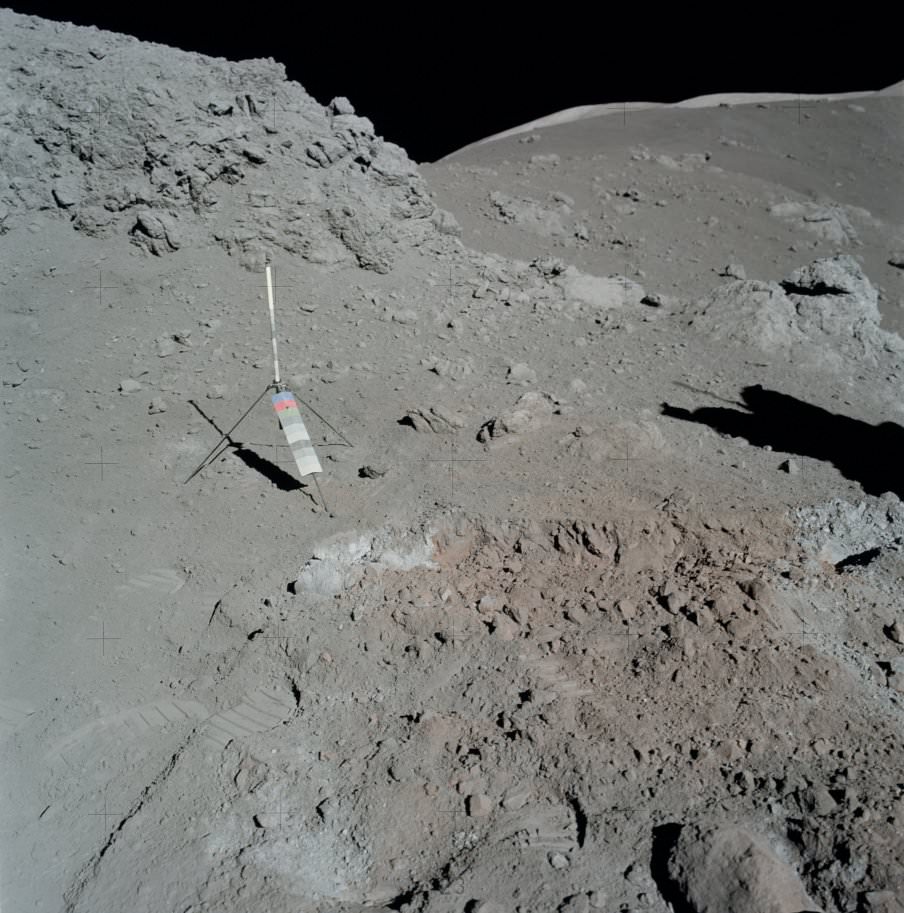[/caption]
A team of NASA-funded researchers led by Carnegie Institution’s Erik Hauri has recently announced the discovery of more water on the Moon, in the form of ancient magma that has been locked up in tiny crystals contained within soil samples collected by Apollo 17 astronauts. The amounts found indicate there may be 100 times more water within lunar magma than previously thought… truly a “watershed” discovery!
Orange-colored lunar soil sampled during Apollo 17 EVA missions was tested using a new ion microprobe instrument which measured the water contained within magma trapped inside lunar crystals, called “melt inclusions”. The inclusions are the result of volcanic eruptions on the Moon that occurred over 3.7 billion years ago.
Because these bits of magma are encased in crystals they were not subject to loss of water or “other volatiles” during the explosive eruption process.
“In contrast to most volcanic deposits, the melt inclusions are encased in crystals that prevent the escape of water and other volatiles during eruption. These samples provide the best window we have to the amount of water in the interior of the Moon.”
– James Van Orman of Case Western Reserve University, team member
While it was previously found that water is contained within lunar magma during a 2008 study led by Alberto Saal of Brown University in Providence, Rhode Island, this new announcement is based upon the work of Brown undergraduate student Thomas Weinreich, who located the melt inclusions. By measuring the water content of the inclusions, the team could then infer the amount of water present in the Moon’s interior.
The results also make correlations to the proposed origins of the Moon. Currently-accepted models say the Moon was created following a collision between the newly-formed Earth and a Mars-sized protoplanet 4.5 billion years ago. Material from the Earth’s outer layers was blasted out into space, forming a ring of molten material that encircled the Earth and eventually coalesced, cooled and became the Moon. This would also mean that the Moon should have similarities in composition to material that would have been found in the outer layers of the Earth at that time.
“The bottom line is that in 2008, we said the primitive water content in the lunar magmas should be similar to lavas coming from the Earth’s depleted upper mantle. Now, we have proven that is indeed the case.”
– Alberto Saal, Brown University, RI
The findings also suggest that the Moon’s water may not just be the result of comet or meteor impacts – as was suggested after the discovery of water ice in polar craters by the LCROSS mission in 2009 – but may also have come from within the Moon itself via ancient lunar eruptions.
The success of this study makes a strong case for finding and returning similar samples of ejected volcanic material from other worlds in our solar system.
“We can conceive of no sample type that would be more important to return to Earth than these volcanic glass samples ejected by explosive volcanism, which have been mapped not only on the Moon but throughout the inner solar system.”
– Erik Hauri, lead author, Carnegie’s Department of Terrestrial Magnetism
The results were published in the May 26 issue of Science Express.
Read the full NASA news release here.

